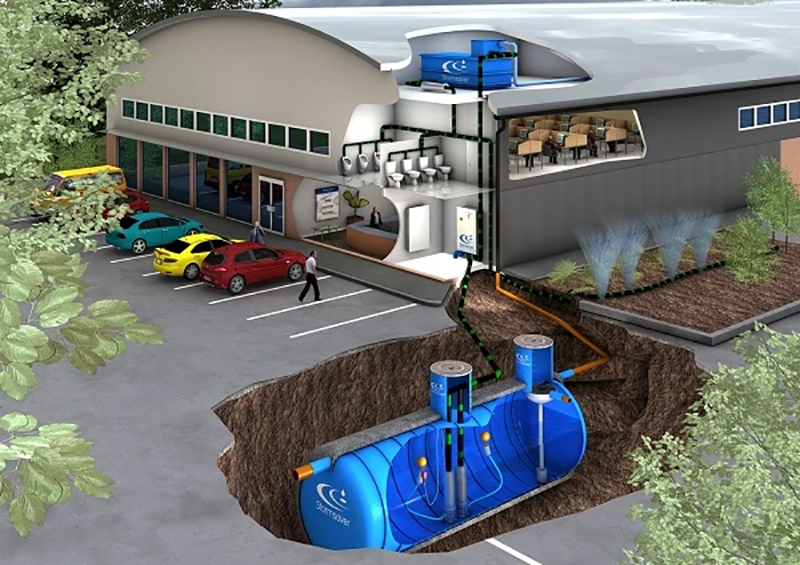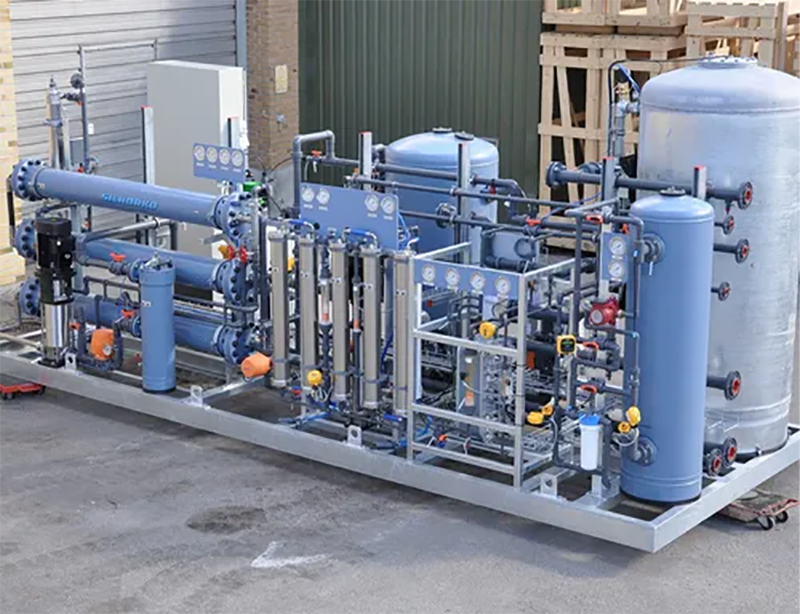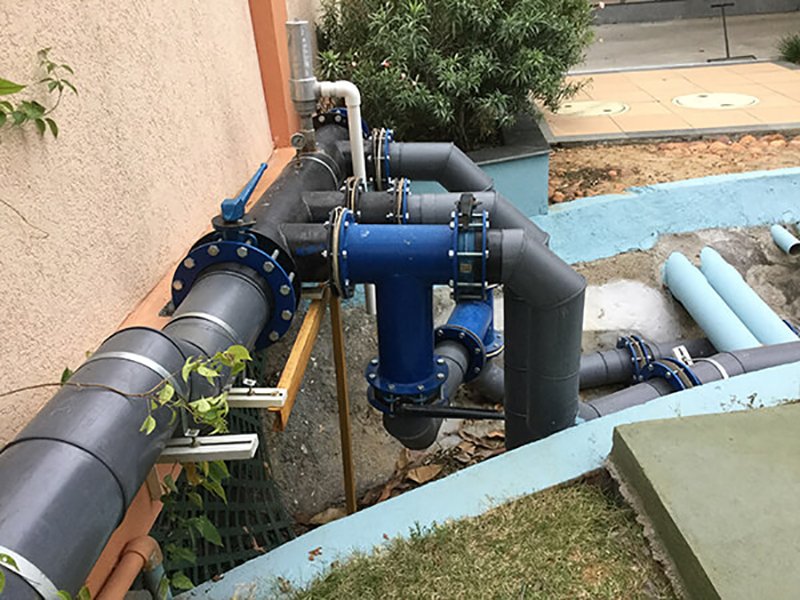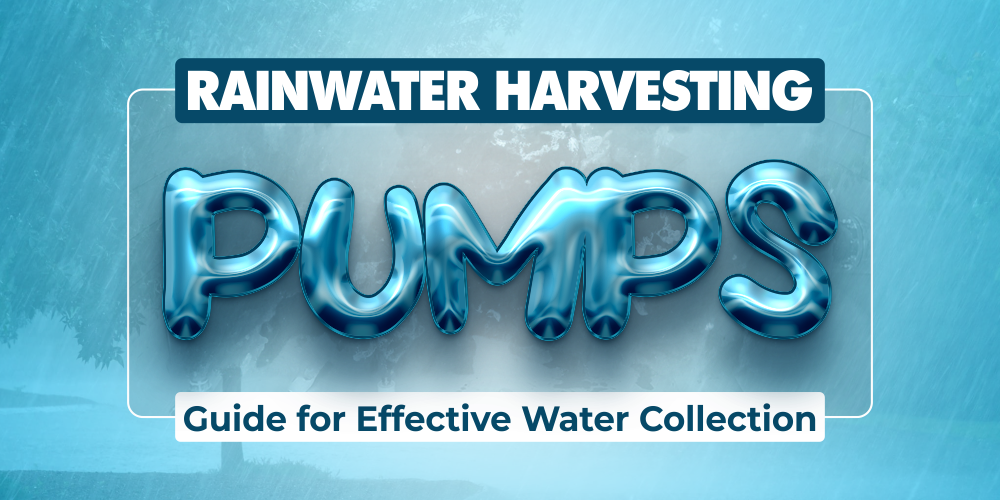Rainwater harvesting is an effective and eco-friendly method of conserving and utilizing water for various purposes. And at the heart of any rainwater harvesting system lies the pump, which plays a crucial role in transferring the collected rainwater for use. This comprehensive guide will delve into the different types of rainwater harvesting pumps, their unique features, and how to select the ideal one for your needs.
Types of Rainwater Harvesting Pumps
1. Submersible Pumps: These pumps are designed to submerge in the water fully and are typically installed inside the rainwater storage tank. There are two main categories of submersible pumps:
Submersible Transfer Pumps: These pumps are primarily used for non-pressurized rainwater applications. They are perfect for transferring rainwater between storage tanks, operating first flush tanks, and emptying rainwater storage tanks. Submersible transfer pumps are equipped with rust-proof plastic housings, oil-free motors, and stainless-steel shafts with ceramic seals, making them durable and reliable.
Submersible Pressure Pumps: Submersible pressure pumps can deliver water at considerably higher pressures than transfer pumps. These pumps are suitable for operating irrigation or water supply systems directly. They also feature rust-proof plastic housings, stainless-steel shafts, and ceramic seals for enhanced durability and reliability.
2. Surface Pumps: Surface pumps are installed outside the rainwater storage tank, usually in a nearby building or pump enclosure. Like submersible pressure pumps, they are used to directly operate irrigation or water supply systems, requiring water pressures of 30 psi to 60 psi. Surface pumps are self-priming and should be used with a floating extractor.

Pump Controllers
Pump controllers play a vital role in rainwater harvesting systems, offering convenient and efficient operation without additional equipment like large pressure tanks, pressure switches, or float switches. These controllers are designed to sense changes in line pressure and respond accordingly, ensuring seamless functionality and optimal water management. Let’s explore some popular automatic pump controller options available in the market:
Pressure-Based Pump Controllers:
These controllers rely on pressure sensors to monitor the water pressure in the system. They automatically activate the pump when the pressure drops below a certain threshold, indicating the need for a water supply. Once the desired pressure is reached, the controller turns off the pump. This automated process ensures a constant water supply while minimizing energy consumption.
Flow-Based Pump Controllers:
Flow-based controllers use flow sensors to detect the water flow rate in the system. When a water demand is detected, such as when a tap is opened, the controller activates the pump to maintain a steady flow rate. Once the water demand is satisfied, the pump is turned off. These controllers are particularly useful in applications where maintaining a specific flow rate, such as irrigation systems, is crucial.

Timer-Based Pump Controllers:
Timer-based controllers offer the flexibility of setting specific time intervals for pump operation. Users can program the controller to activate the pump at designated times of the day or week. This feature is beneficial for situations where water is required periodically, such as in scheduled irrigation systems or timed water supply.
Advanced Smart Controllers:
These controllers combine multiple features and advanced technology for precise system control. They often include built-in pressure regulators, digital displays for monitoring and adjusting settings, and additional remote and control connectivity options. Smart controllers offer enhanced convenience and allow for customization according to specific requirements.
When selecting a pump controller for your rainwater harvesting system, consider factors such as the desired level of automation, the specific needs of your application, and compatibility with your existing pump and power supply. By choosing the right pump controller, you can optimize the operation of your rainwater harvesting system, ensuring efficient water utilization and contributing to water conservation efforts.
Floating Extractor
A floating extractor is a vital component of any rainwater harvesting system, designed to optimize water quality and ensure the cleanest water is drawn from the storage tank. It consists of a screened intake attached to the end of a suction hose, suspended from a float on the water surface. Positioning the floating extractor allows it to remain a few inches below the tank’s surface, strategically capturing water free from debris, sediment, and contaminants.
The primary function of a floating extractor is to prevent the intake of impurities that may accumulate at the bottom of the tank, such as leaves, twigs, or dirt particles. By drawing water from a higher level, the floating extractor taps into the cleanest layer of the stored rainwater, ensuring the highest possible water quality for your various applications.
Additionally, floating extractors contribute to the overall efficiency of the rainwater harvesting system. By drawing water from the cleanest layer, the need for additional filtration or purification processes may be reduced, saving energy and resources. Moreover, the minimized intake of sediment and debris helps to maintain the long-term functionality and lifespan of the pump and other system components.
When setting up a rainwater harvesting system, including a floating extractor as part of the overall design is essential. Factors such as the size and capacity of the storage tank, the desired flow rate, and the specific water quality requirements for your intended applications should be considered. Installing a floating extractor in the tank will optimize the system’s performance and ensure the highest water quality standard for your needs.

Choosing the Right Rainwater Harvesting Pump
When selecting a rainwater harvesting pump, several factors should be considered:
- The intended use of the harvested water (e.g., irrigation, water supply).
- The required water pressure and flow rate for your specific applications.
- The size and location of the rainwater storage tank.
- The available power supply (e.g., 115v or 230v) at your installation site.
Considering these aspects, you can choose the most suitable pump for your rainwater harvesting system, ensuring efficient and reliable water transfer and utilization.
Conclusion
Rainwater harvesting pumps are crucial components in efficiently transferring and utilizing collected rainwater. Understanding the different types of pumps, their features, and their applications will help you decide when to select the right pump for your rainwater harvesting system. Whether you need a submersible transfer pump for non-pressurized applications or a high-pressure surface pump for irrigation or water supply systems, the options discussed herein will assist you in getting the perfect pump for your specific needs. Embrace rainwater harvesting and positively impact water conservation with the right pump choice.
Comments are closed.

